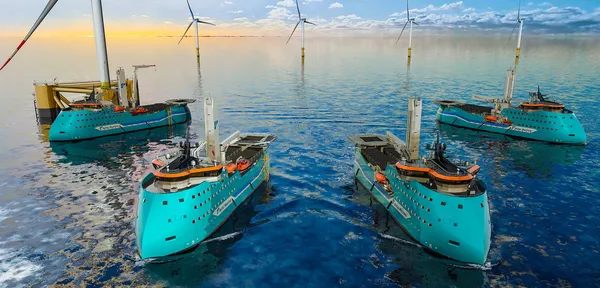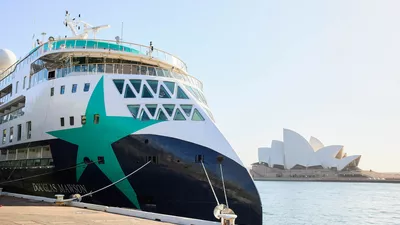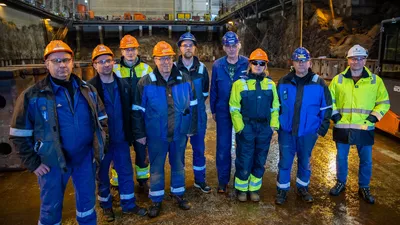"We are pleased to build on our existing relationship with Ulstein Design & Solutions AS for our next-generation Construction Service Operating Vessels (CSOVs) combining Acta Marine's operational experience and Ulstein's innovative design capabilities," states Rob Boer at Acta Marine.
TWIN X-STERN - Reduced motions, increased comfort and improved fuel efficiency
The ULSTEIN TWIN X-STERN® has several characteristics, but the easiest way to describe it is as a ship with two sterns and four main propeller units: two at each end.
The proven X-STERN® at each end results in excellent operability with either end towards the weather, without limitation on vessel speed.
The TWIN-X-STERN designs from Ulstein share the characteristics of improved fuel efficiency, increased dynamic positioning (DP) capability and manoeuvrability, reduced motions, and reduced noise. The TWIN X-STERN offers greater flexibility regarding the choice of propeller type. A bi-symmetric hull shape and propulsion setup with fewer propulsion units are possible.
Quality rest is needed for the technicians to perform safe operations. Ulstein's designs provide secure access for the service personnel to offshore wind installations and ensure safe operations and comfortable accommodation for the onboard personnel.
Hybrid-powered, with green methanol as the primary source of energy
The CSOVs for Acta Marine have a hybrid power solution, with green methanol intended as the primary source of energy. The Dual-Fuel engines are supported by a battery package, integrated into the vessel in such a way as to allow the most fuel-efficient modes of operation, reduced maintenance costs and reduced emissions.
"Being a leading actor in the renewable energy business, it is paramount to be prepared for a future where zero or low-carbon fuels are available. Acta Marine strongly wishes to offer their clients the largest possible reduction in emissions straight from the delivery of the vessels. Therefore, these vessels required a practical and timely available solution to reduce their carbon footprint from the outset of the design", says Erwin Jager in Ulstein Design & Solutions AS.
"The carbon footprint of Marine Gas Oil (MGO) makes MGO non-sustainable as the sole choice for the future. The decision on what alternative fuel to focus on can be overwhelming as it is affected by many internal and external factors. Through a decision support process developed by Ulstein to guide owners in the myriad of choices to be made, a matrix of alternative fuels has been evaluated towards a set of criteria unique to the shipowner and the business case. Through this process, methanol came out as the winner of this project, with the best overall score. The energy density and storage of methanol are favourable; they are an accessible energy source, and dual-fuel engines are available in the market which can handle both methanol and diesel," states Jager.
As soon as methanol was chosen as an alternative energy source, Ulstein Design & Solutions started adapting the design, implementing the methanol bunkering, tank, and system layouts on a conceptual level.
Ulstein offshore wind service vessel designs
Ulstein's offshore wind service vessel designs have been developed to effectively support the commissioning, operation, and maintenance of offshore wind farms.
The SX216 vessel has a length of 89,9m, a beam of 19,2m and accommodates up to 135 POB. It has a walk-to-work (W2W) motion-compensated gangway for safe personnel transfer to the turbines, a 3D-motion-compensated crane for cargo transfer, and it can carry a daughter craft for in-farm transfers.
Ulstein has previously developed and built two CSOVs for the Netherlands-based shipowner. The new vessels will be constructed at Tersan Shipyard.





